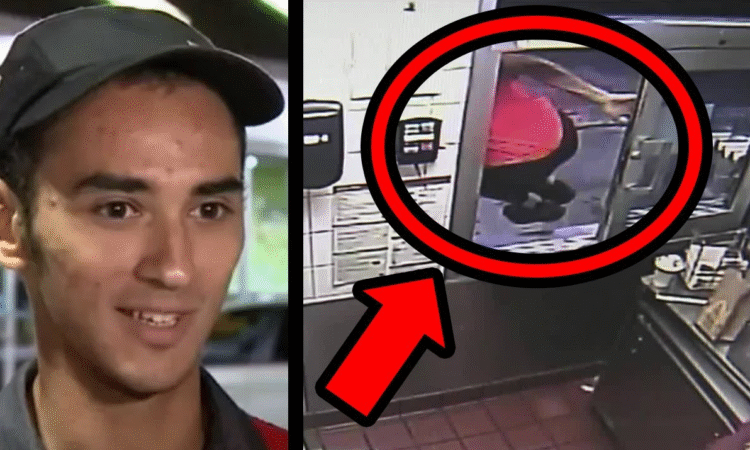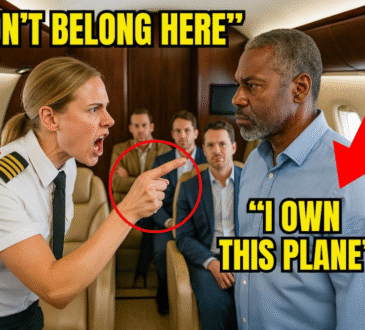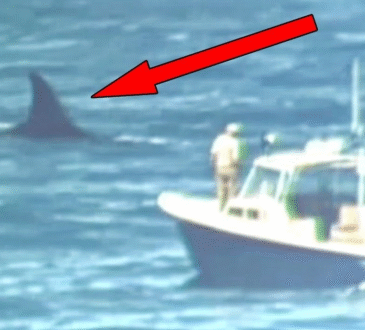
It was a normal morning in Doral, Florida. The breakfast rush had started at the McDonald’s on the corner, and customers lined up in the drive-thru for their meals. Behind the window, 22-year-old Pedro Valoria was doing his job. He had worked at this McDonald’s long enough to know the routine: take the orders, collect the money, and hand out the food with a smile. Nothing about this shift seemed unusual at first.
Pedro had gotten used to the busy mornings. People came in before work—often tired—looking for a quick meal and coffee. He moved quickly, greeting each customer politely and making sure their orders were correct. The drive-thru line moved at its usual pace: cars pulling up, drivers paying, and then driving forward to pick up their food. For Pedro, it was just another breakfast shift.
Then, a woman pulled up to the window. She had already placed her order and paid without any problems. In the back seat, two children sat quietly, waiting for their food. Everything about the order felt routine. Pedro got the items ready, preparing to hand them to the driver with his usual speed.
But then something happened that broke the rhythm of the morning.
As the woman’s car reached the pickup window, it didn’t stop. Instead of pressing the brake and coming to a halt like every other car, her vehicle kept rolling forward slowly.
Pedro looked up, confused. Cars in the drive-thru always stopped. That was how the system worked. Yet this one continued moving.
For a moment, Pedro thought maybe the woman had made a mistake—that her foot had slipped from the pedal. But as the car kept rolling, a strange feeling came over him. Something was wrong. This was no ordinary order.
What started as a normal morning in Doral was about to turn into something none of them would ever forget.
As the car rolled past the pickup window, Pedro’s confusion quickly turned into alarm. Then he heard it—the sharp, panicked cries of children. Two young voices were screaming from the back seat:
“Mother! Mother, stop it! What are you doing?”
The sound cut through the usual noise of the morning rush. It wasn’t the playful chatter of kids or the impatient fussing Pedro sometimes heard from families in the drive-thru. This was different. It was desperate.
The children were terrified, and their words told Pedro everything he needed to know: something was seriously wrong with their mother.
Pedro leaned forward, trying to see through the car window. The driver’s movements were strange. She wasn’t steady behind the wheel. Instead, her body jerked as if she wasn’t in control. Pedro noticed her chest rising and falling in a way that didn’t look normal. Her breathing was heavy, uneven—almost like she was fighting for air.
“I see she hardly breathing, and I thought, ‘That’s not normal,’” Pedro later explained.
At first, he wondered if she had simply lost focus—maybe distracted by something. But the longer he looked, the clearer it became. This was a medical emergency. She wasn’t just distracted. She was in danger. And with her, her two children were also at risk.
Inside the car, the little ones kept crying, their voices high with fear. Pedro could see their small faces pressed forward, looking helplessly at their mother. Their panic made the situation even more urgent. If the car kept rolling and their mother couldn’t stop it, anything could happen. It could go into traffic, crash into another car—or worse.
Pedro felt his chest tighten. He was only 22 years old, just an ordinary employee working a drive-thru shift. But now, he faced a moment that called for more than just handing out food.
His mind began racing. He had seconds to act. The quiet rhythm of the morning had vanished. What began as a regular order had turned into a terrifying emergency, and Pedro knew he could no longer stay behind the counter.
He had to decide: watch the car keep moving—or do something to help.
Pedro Valoria did not wait for anyone to tell him what to do. As soon as he realized the woman was in trouble, his instincts took over. The car was still rolling. The children were still screaming. And he knew every second mattered.
“I thought, I got to get to that car,” he later said.
Without hesitation, Pedro made a decision that most people would never even consider. Instead of running through the restaurant to get outside, he leapt straight out of the drive-thru window.
Customers and co-workers who later saw the security footage could hardly believe it. One moment he was handing out food—the next, he was jumping through the small opening, landing on the ground outside, and sprinting toward the moving vehicle.
“My brain was on hero mode,” Pedro recalled. “Just… my brain was on hero mode.”
The car continued creeping forward, the driver barely conscious, and the children trapped inside. Pedro ran as fast as his legs would carry him. He didn’t stop to think about his own safety. He only thought about the woman and her kids.
“I thought, if these kids lose their mother today, it would have been tragic. If I would have had to die to save that woman, I would have done it,” he later explained.
His words showed how serious the moment felt to him. He wasn’t acting for praise or recognition. He was acting because he believed lives were at stake.
As Pedro reached the car, he took an even braver step. He moved in front of the vehicle, stretching out his arms in an attempt to slow it down and bring it to a stop—fully aware that he was putting himself at risk.
Inside the restaurant, surveillance cameras captured the entire scene. Viewers would later see the exact moment Pedro disappeared from the window and reappeared outside, chasing after the vehicle. It was the kind of scene most people only expect to see in movies. But this was real, and it was happening in a McDonald’s parking lot in Dorado, Florida.
For Pedro, there was no time to think about fear. The only thought in his mind was simple: stop the car. Save the woman. Protect the children.
As Pedro Valoria pushed himself in front of the car, luck played a small part in what happened next. The vehicle rolled toward a curb in the parking lot. The raised concrete stopped it before it could go any farther into traffic.
That small barrier may have saved lives—but it also gave Pedro and others the chance they needed to help the driver. Only then did Pedro learn who was behind the wheel. The woman was not just any customer. She was an off-duty police officer.
Her sudden medical emergency had put her children, herself, and everyone nearby in danger.
Pedro was not alone in his rescue attempt. Inside the McDonald’s lobby, an off-duty fire rescue officer had seen what was happening. He rushed outside to help as soon as he realized the situation. His training and quick reaction added another layer of support in those critical moments.
A second McDonald’s employee also came to assist. This worker, who asked not to be identified, helped perform CPR on the woman when it became clear she needed medical aid. For a few tense minutes, it was all hands on deck. The group worked together, doing everything they could until paramedics arrived.
While others focused on the officer, Pedro turned his attention to the children. They were still in the back seat, crying and terrified. He leaned toward them, trying to calm their fears.
“I was with the kids. I was trying to tell them it will be all right,” Pedro said later.
He admitted the sight of their tears shook him deeply. “The kids were breaking my soul.”
The moment was overwhelming for everyone. A simple trip through the drive-thru had turned into chaos. Yet in the middle of the panic, there were people willing to step forward—a McDonald’s worker, a fire rescue officer, and another employee—all determined to keep the woman alive.
By the time rescue workers arrived on scene, the immediate danger had passed. The car had been stopped, CPR had been started, and the children were safe. What could have ended in tragedy was instead a story of bravery, teamwork, and quick action.
When the emergency crews arrived, the off-duty police officer was quickly taken to a nearby hospital. Her condition was still serious, but thanks to the quick actions of the people around her, she had a chance to recover. News later confirmed that she was being treated in the following days.
For Pedro Valoria, that was enough. “She’s alive, and that’s enough,” he said simply.
Back at the McDonald’s, people began to understand what had really happened. Surveillance video showed Pedro leaping out of the drive-thru window, racing toward the car, and risking his own safety to help a stranger. For those who watched the footage, it was clear he hadn’t thought about himself for a second. He had only thought about saving lives.
The McDonald’s owner, Alex Mendez, praised his employee without hesitation. “He is an excellent employee, so it didn’t surprise me that he took immediate action and jumped through a window to help save this woman,” Mendez said.
His words also included recognition for the second employee who had helped with CPR. Their quick thinking and action were everything in that moment.
Pedro, however, didn’t see himself as a hero. He repeated that he would have risked his life without question. “If I had to die to save that woman, I would have, right?”
He explained it wasn’t about glory, attention, or even thanks. For him, it was about doing what was right when the moment came.
The story spread quickly—not just because it was dramatic, but because it showed something rare: the courage to act without hesitation. Many people say they would risk their lives to save another, but Pedro had actually done it.
In the end, the woman survived. Her children were safe. And a community saw an ordinary young man rise to an extraordinary challenge.
What began as a simple breakfast shift at a McDonald’s in Doral, Florida, ended with a reminder of how one person’s courage can change everything in just a few seconds.
What would you have done if you were in Pedro’s place that morning?





The same thing Petro did
He saved the mom an kids.Seem like the mom was to sick.to even called for help.